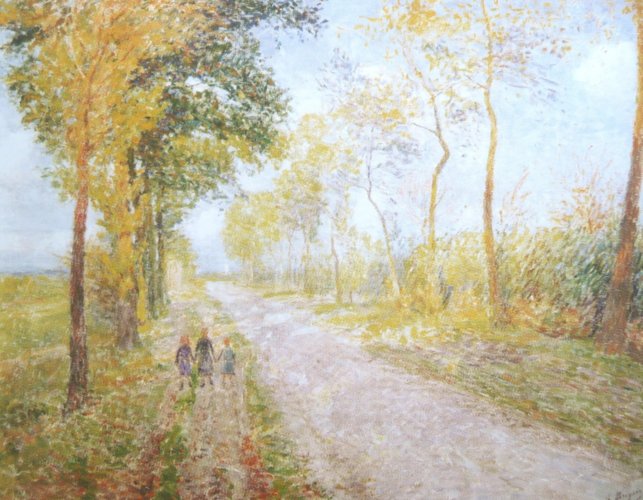Description:
Georges Buysse (1864-1916), a Belgian painter, studied under the director of the Ghent Academy, Louis Tijtgadt. He was also strongly influenced by Emil Claus, with whom he co-founded the “Vie et Lumiére” group (“Life and Light”) in 1904. The acceptance of the Impressionist principles advocated by this group led to a significant lightening of his work, with the “random framing” and study of light phenomena at different times of day and year. Edward Alexander Raczynski purchased two paintings by the artist for his collection. They are landscapes that exude peace, prompting relaxation and contemplation of nature.
Description of the painting:
The painting “Road in September” is a work created in the style of Impressionism, in the technique of Pointillism. Views of roads, fields, and villages were a favorite motif for the artist. The landscape chosen by Buysse depicts an alley, along which three figures are walking away from the viewer. The way the work is composed encourages the viewer to follow the people walking into the painting.
The perspective of the painting “Road in September” is constructed using central perspective. The road, or more precisely the alley, leads the viewer’s eye into the painting. This direction is reinforced by the placement of the three figures at the foreground, facing away from the observer. Buysse used a palette based on two colors – green and blue. Different shades of these colors create the impression of an almost monochromatic surface. The vegetation shown in the left part of the image is accentuated with stronger tones and seems to be in opposition to the fading colors of the right side.


